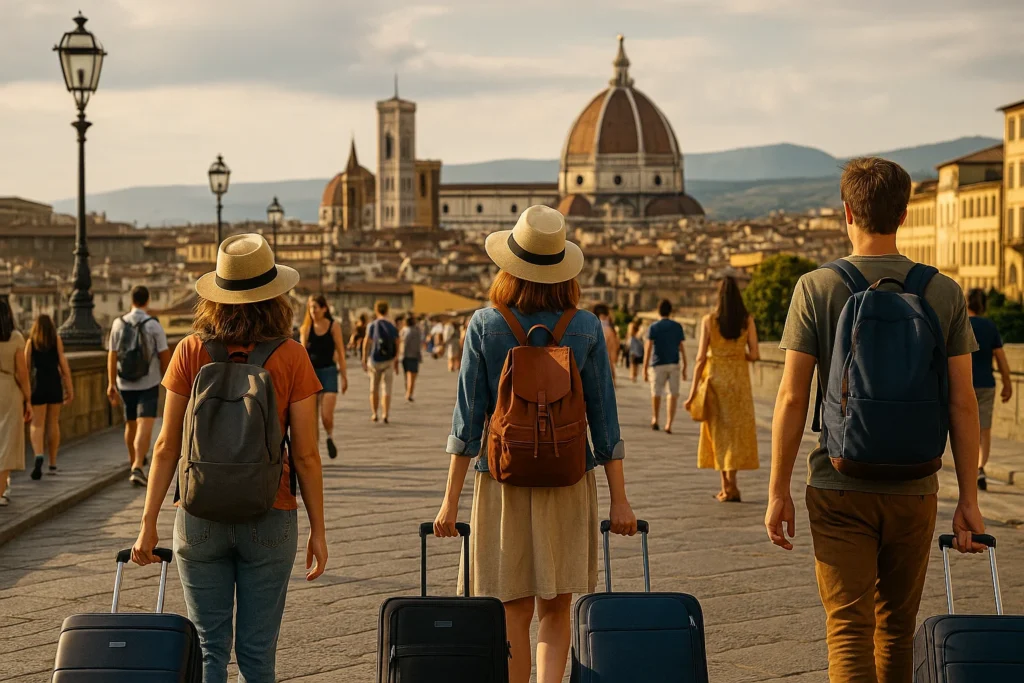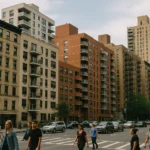Introduction: More Than Just a Vacation
Remember “revenge travel”? After years of lockdowns and restrictions, people burst out of their homes, eager to catch up on missed adventures. In 2022 and 2023, it was all about quick getaways, ticking off bucket-list items, and making up for lost time. But fast forward to the summer of 2025, and something remarkable has happened. That frantic urge to travel has morphed into something deeper, more meaningful, and much longer-lasting. We’re no longer just chasing vacations; we’re embracing “lifestyle tourism.”
This isn’t just a fancy new term; it’s a whole new way of traveling. Instead of quick escapes, people are seeking immersive, long-term experiences – diving deep into local cultures, focusing on wellness, or even combining work with extended stays abroad. Countries, hotels, and even local communities are scrambling to adapt to this shift, realizing that travelers are looking for more than just a bed for the night. They’re looking for a richer, more integrated experience of life itself. Let’s explore how this evolution is reshaping global travel.
Defining the Shift: What is “Lifestyle Tourism”?
To understand this new travel era, it’s helpful to see how we got here. “Revenge travel” was like uncorking a bottle of fizz – exciting, bubbly, and short-lived. People just wanted to go anywhere, do anything. But once that initial burst wore off, travelers started asking for more. They realized that a week-long sprint through three different cities left them exhausted, not enriched.
Beyond the Tourist Trap
Lifestyle tourism is the answer to that longing for depth. It’s about traveling not just to see sights, but to live a different life, even if only for a few weeks or months. It’s a broader global trend where travelers seek:
- Immersive Experiences: This means going beyond the main tourist attractions to truly connect with local life, learn new skills, or participate in daily routines.
- Long-Term Stays: Instead of hopping between cities every few days, lifestyle tourists often settle in one place for weeks or months, becoming temporary residents.
- Purpose-Driven Travel: Trips are often planned around a specific interest or goal, such as improving well-being, mastering a craft, or even working remotely from a new locale.
It’s less about checking off a list of landmarks and more about checking in with yourself, connecting with a community, and experiencing a place on a deeper level. This shift signals a desire for travel to be transformational, a part of one’s personal growth journey, rather than just a break from reality.
The Rise of “Slow Travel”: Embracing the Unhurried Journey
One of the defining characteristics of lifestyle tourism is the embrace of “slow travel.” This concept rejects the rushed itineraries of traditional tourism in favor of longer stays and a more relaxed pace. It’s about savoring a destination, not just skimming its surface.
Deep Dives, Not Quick Flashes
- Rural Italy: Imagine spending a month in a small Tuscan village, learning to cook traditional pasta from a local nonna, practicing Italian at the village market, and hiking through vineyards. This kind of deep cultural immersion is now highly sought after. Travelers are renting villas for weeks on end, becoming part of the local fabric.
- Kyoto, Japan: Instead of a whirlwind tour of Japan, travelers are choosing to stay in Kyoto for extended periods. They might take calligraphy classes, participate in tea ceremonies, explore hidden temples at their leisure, and truly understand the city’s ancient traditions without feeling rushed.
- Patagonia, South America: For nature lovers, slow travel might mean settling in a small town near a national park for a month. Instead of a single, quick trek, they might spend weeks exploring different trails, observing wildlife, and truly connecting with the pristine wilderness of places like Patagonia.
These destinations, and countless others, are appealing precisely because they encourage longer stays and genuine engagement. Travelers are no longer just looking to see a place, but to experience it intimately, building connections that last long after they return home.
Travel for Growth: Health, Creativity, and Skill-Building
Beyond simple relaxation, a significant driver of lifestyle tourism in 2025 is the desire for personal growth. Travelers are deliberately choosing locations and programs that offer opportunities for self-improvement, learning, and rejuvenation.
Journeys of Self-Discovery
- Health Retreats: From yoga and meditation retreats in the serene mountains of Bali to detox programs in the wellness centers of Costa Rica, travelers are prioritizing their mental and physical well-being. These aren’t just spa days; they are structured programs designed for holistic health.
- Creative Sabbaticals: Artists, writers, and other creatives are seeking inspiring locations for extended periods to focus on their craft. Imagine a novelist renting a quiet cottage in rural France to work on their next book, or a painter attending a workshop in a vibrant art community in Mexico. These trips are an investment in their creative development.
- Skill-Building Programs: Travelers are enrolling in immersive courses to learn new skills. This could be a professional development workshop in a global tech hub, an intensive language course in Spain, or even hands-on sustainable farming techniques in a rural community. The goal is to return home not just rested, but with new abilities and perspectives.
This trend reflects a broader societal shift where people are valuing experiences that contribute to their personal and professional development over accumulating more material possessions.
Hospitality Adapts: Curated Life Experiences
The travel industry, from large hotel chains to individual Airbnb hosts, is quickly adapting to this new demand for deeper experiences. In 2025, it’s not enough to just offer a clean room; hospitality providers are stepping up to offer “curated life experiences.”
Beyond the Mini-Bar
- Hotels as Hubs for Immersion: Boutique hotels and even some larger chains are redesigning their offerings. They might have a “cultural immersion specialist” who can arrange cooking classes with local chefs, guided meditation sessions, or private language lessons. They’re becoming gateways to local life, not just places to sleep.
- Airbnb’s Evolution: Airbnb, a pioneer in local stays, has expanded significantly beyond simple room rentals. They are now actively promoting “Experiences” – unique activities led by locals, ranging from street art tours to traditional craft workshops. Furthermore, they’ve seen a surge in longer-term bookings (30+ days), recognizing that many travelers are looking for temporary homes, not just short-term rentals. They also offer “Airbnb Luxe” properties with amenities tailored for longer stays and concierge services.
- Specialized Retreats and Tours: Entire businesses are emerging that specialize in crafting bespoke lifestyle tourism packages. These might include writing workshops in Tuscany, mindfulness retreats in the Himalayas, or cycling tours that focus on local gastronomy in France.
This adaptation shows that the hospitality industry is understanding that today’s travelers want to do more, learn more, and connect more deeply with their chosen destinations.
Local Impact: Opportunities and the Housing Challenge
The rise of lifestyle tourism presents a double-edged sword for local communities. While it brings clear economic benefits, it also introduces challenges, particularly concerning housing and the unique character of the area.
A Balancing Act
The Upsides for Local Communities:
- Economic Boost: Lifestyle tourists, especially those on longer stays, inject more money into local economies. They support small businesses, farmers’ markets, local restaurants, and craftspeople. They often live like locals, spending money on daily necessities rather than just tourist traps.
- Job Creation: The increased demand for services can create jobs in hospitality, guiding, teaching (for skill-building programs), and other local sectors.
- Cultural Exchange: Longer stays foster genuine interactions between travelers and locals, leading to a richer cultural exchange and mutual understanding.
- Revitalization of Rural Areas: “Slow travel” can bring much-needed economic activity to rural towns and regions that might have been struggling, preventing depopulation and preserving local traditions.
The Challenges:
- Housing Affordability: The biggest concern is often gentrification. As popular destinations attract more long-term visitors, landlords may convert residential units into short-term rentals, driving up rents and making it difficult for local residents to afford housing in their own communities.
- Infrastructure Strain: An influx of visitors, even “slow travelers,” can strain local resources like water, waste management, and public transportation, especially in smaller towns not built for high tourism volumes.
- Loss of Authenticity: While lifestyle tourists seek authenticity, too many of them can inadvertently contribute to the commercialization and “Disneyfication” of a place, eroding its unique character.
- Sustainability Concerns: Increased travel, even slow travel, has an environmental footprint. Ensuring that tourism is managed sustainably, respecting local ecosystems and resources, is a critical challenge.
Local governments and communities are exploring solutions, such as regulating short-term rentals, investing in infrastructure, and promoting responsible tourism practices to ensure that lifestyle tourism is a net positive for everyone.
Generational Shift: Experience Over Assets
At the heart of the lifestyle tourism boom is a profound generational shift in how people value their money. For Millennials and Gen Z, the emphasis is increasingly on collecting experiences rather than accumulating material assets like cars, houses, or luxury goods.
The Rise of the Experiential Economy
- Prioritizing Memories: These generations often value unique experiences, personal growth, and authentic connections over traditional markers of success. A once-in-a-lifetime trip or a skill-building sabbatical holds more appeal than, say, a new car.
- Digital Natives: Growing up with the internet and social media, these generations are comfortable with remote work and online learning, making location-independent lifestyles more feasible.
- Sustainability Mindset: Many younger travelers are also more conscious of their environmental footprint and seek out sustainable travel options, aligning with the “slow travel” ethos.
- Financial Flexibility: While homeownership can be challenging, these generations are often adept at managing finances in a way that allows for flexible spending on travel and experiences, often through freelance work or remote employment.
- Community Seeking: They are more likely to seek out and join communities, both online and offline, that share their values and interests, leading them to destinations with established digital nomad or expat networks.
This shift isn’t just about travel; it’s a broader cultural redefinition of what it means to live a rich and fulfilling life, pushing companies and countries to offer more than just products—they need to offer compelling life experiences.
Social Media’s Lens: Storytelling and Digital Diaries
Social media isn’t just for sharing pretty pictures of your vacation anymore. In the era of lifestyle tourism, platforms like Instagram and TikTok have become powerful tools for storytelling, allowing travelers to document their immersive journeys and inspire others to embrace a more experience-driven life.
The Art of the Travel Narrative
- “Day in My Travel Life” Vlogs: These vlogs, often on TikTok or YouTube, offer an authentic glimpse into the daily routines of digital nomads or long-term travelers. They showcase local markets, co-working spaces, language classes, and cultural activities, painting a realistic picture of the lifestyle.
- Mini-Documentaries: Instead of quick snapshots, travelers are creating more elaborate “mini-documentaries” of their experiences, delving into the history of a place, the intricacies of a local craft, or the challenges of adapting to a new culture.
- Authentic Storytelling: The focus has shifted from perfectly staged photos to raw, relatable stories. Travelers share their triumphs (like finally mastering a local dish) and their struggles (like navigating a new language), fostering a deeper connection with their audience.
- Community Building: Social media acts as a vital bridge, connecting like-minded travelers and allowing them to share tips, find communities, and even plan meetups in different parts of the world. Hashtags like #SlowTravel, #LifestyleTourism, and #DigitalNomadLife serve as discovery tools.
- Inspiration for Others: The visually rich and narrative-driven content inspires millions, nudging them to consider how they, too, might integrate travel and personal growth into their own lives, further fueling the lifestyle tourism trend.
Social media has effectively become the digital scrapbook and broadcast channel for lifestyle tourism, allowing its essence to spread organically and influence a global audience.
Conclusion: A World Reimagined for the Experiential Traveler
The 2025 summer travel boom is a clear signal: the era of “revenge travel” has gracefully matured into the age of “lifestyle tourism.” Travelers are no longer content with fleeting escapes; they are actively seeking immersive, long-term cultural, wellness, and work-based experiences that enrich their lives and broaden their horizons.
This profound shift is evident in the rise of “slow travel” destinations like rural Italy and Kyoto, where longer stays allow for deeper connections. It’s seen in travelers deliberately choosing locations for health retreats, creative sabbaticals, or skill-building programs, transforming vacations into opportunities for personal growth. The hospitality industry, from hotels to Airbnb, is responding by offering “curated life experiences,” moving beyond basic accommodation to become facilitators of authentic local immersion.
While the impact on local communities, particularly regarding housing and sustainability, requires careful management, the economic benefits and cultural exchange are undeniable. This evolution is driven significantly by a generational shift among Millennials and Gen Z, who prioritize experiences over material assets, and is amplified by social media trends that enable rich storytelling and “day in my travel life” vlogs. The landscape of global mobility is changing, suggesting that for many, the future of work and life will be one woven seamlessly with exploration and personal fulfillment.



